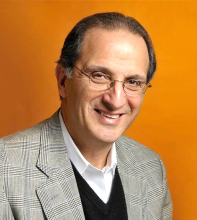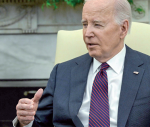You are here
How Democrats lost white voters
Oct 03,2022 - Last updated at Oct 03,2022
When trying to understand how Democrats lost white working-class voters, four stories come to mind:
- In 1984, both President Ronald Reagan, who was running for reelection, and his challenger, former vice president Walter Mondale, appeared before the National Italian American Foundation dinner. Mondale was accompanied by his running mate, Congresswoman Geraldine Ferraro, an Italian American. Mondale’s speech, a string of “I’m for this or that”, was met with little enthusiasm, his only applause lines those that mentioned his running mate.
Reagan began his remarks telling the attendees that they were “a loving affirmation of the sometimes-desperate dreams of those world changers who came here and invented America. He focused the entirety of his comments on the Italian American immigrant experience, the hardships they endured, the values they lived and their proud accomplishments. When he finished, there wasn’t a dry eye in the room because the Hollywood actor had let them know that he understood their story. I left upset, Reagan gave the speech long delivered by Democrats and Mondale demonstrated that he, like many Democrats, had forgotten how to connect with voters who had once been their party’s backbone.
- During the Clinton administration, I was invited to a chat with the president. I told him about my hometown in upstate New York. It was largely Italian American and immigrant, with three generations living in two-family post-war duplexes. Most had good union jobs in the local cotton mills. When the mills moved their operations overseas, thousands lost their livelihoods and were forced to move looking for alternative employment. Extended family ties were severed as older folks were left behind. Homes were abandoned and left to disrepair. The city’s population dropped from 100,000 to 58,000 in a few decades. When I asked Clinton what could be done, he responded, We’re never getting those jobs back. We need to invest in continuing education and retraining in high-tech jobs.” His flippant answer showed little understanding of my middle-aged former neighbours or compassion for their plight.
- During the 2008 elections, I had a prominent Republican conservative activist on my TV show. After listening to his traditional Republican arguments about lower taxes, cutting government and deregulation, I asked him, If that’s your platform, why do your candidates spend so much time railing against abortion, immigration and racial justice?” He responded, “Those are shiny objects we dangle in front of angry voters to win their support, so we can win elections in order to pursue our economic policies.”
- Then in 2014, after Democrats’ terrible losses nationwide, I was at a party leadership meeting where the party’s pollster presented the results. The election wasn’t as bad as some thought, he argued. Democrats had won handsome majorities of its “base vote”, young people, educated women, and Black, Latino and Asian voters. The problem was that despite winning these groups, Democrats needed to turn out more of them to win.
As chair of the party’s council representing ethnic voters of European and Mediterranean descent, I pointed out that by ignoring these voters, we had lost legislative elections in Midwestern states, with devastating impact on all voters in those states. In addition to focusing on our base, couldn’t the party direct more resources toward winning white ethnic voters? His response: “We can’t waste money on groups that are not ever going to vote for us.”
Democrats lost touch with white ethnic voters and pursued their own version of “either-or” politics. By speaking only to their “base”, Democrats left the field wide open for Republicans to exploit white working-class voters’ needs and their feelings of abandonment.
This November, Democrats have a chance to turn this around. In Pennsylvania and Ohio, Senate candidates John Fetterman (PA) and Tim Ryan (OH) speak to the frustrations and aspirations of white working-class voters. Although their policies differ, Fetterman is somewhat more politically progressive than Ryan, both directly address the needs of those who are struggling with a changing economy. Without abandoning critical issues like women's rights and racial equity, these candidates present them in the context of policies that serve all Americans. They point the way forward for Democrats to both defeat Trumpism and become a majority governing party.













